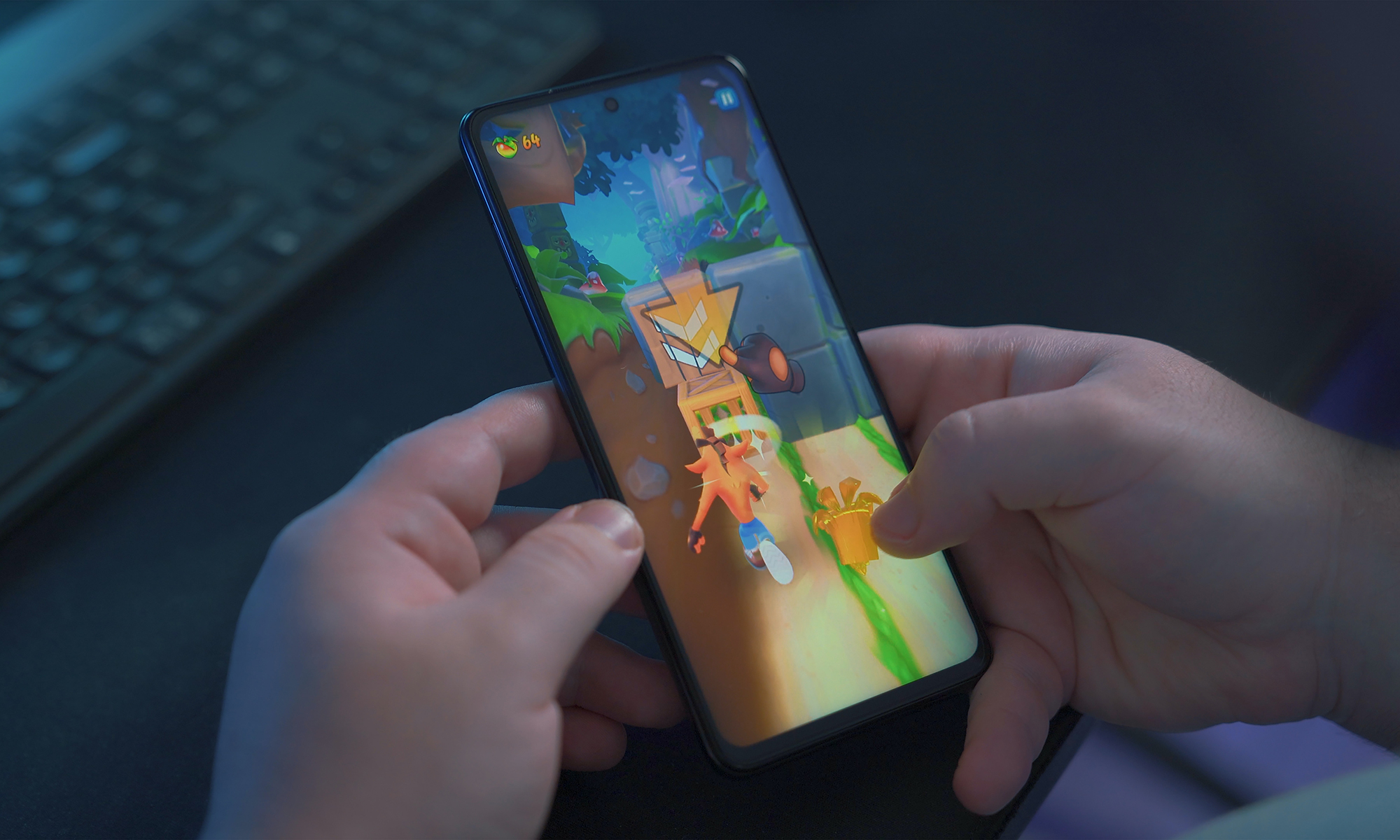When discussing the video game industry, the first games that come to mind are PC and console games. Mobile gaming might look secondary while driving more than half of the total revenues of the video gaming industry. And it’s no wonder: while PC or console games are popular among enthusiasts who are not afraid to figure out complex gameplay, mobile games can capture the attention of both dedicated gamers and your grandmother enjoying a three-in-a-row type of puzzles.
Mobile gaming constantly evolves, adopting the best practices of PC/console game development and sticking to its own findings. Many studios now choose to hire mobile game developers to strengthen production and meet the growing demand for high-quality titles. So, what is the segment's current state, and where is it heading? To give you a comprehensive answer, specialists from Game-Ace, a leading mobile game development company, have gathered the main trends in the mobile gaming industry. Let’s dive in!
The Mobile Game Market In Today's Digital Entertainment Landscape

Mobile gaming market revenue worldwide in 2016 and 2023, by operating system
After skyrocketing revenues mobile gaming has seen during COVID-related lockdowns, the market is declining, returning to pre-pandemics performance. In 2022, almost every region lost 6-11% in revenues compared to the previous year. However, it is definitely not a reason to panic, as such a shift could have been expected after the lockdown restrictions were lifted and people returned to their regular way of living.
At the same time, the industry doesn’t stand still: game developers change their focus due to shifting demands in game genres, new monetization models arise and dominate, and new markets overtake the traditional leaders (e.g., China surpassed Japan in revenues).
The Latest Mobile Gaming Industry Trends

1. The Rise of Mobile Gaming in Africa, the Middle East, and LATAM
The mobile gaming adoption in these regions has been meteoric, signaling a shift in global gaming dynamics. As smartphone penetration increases in these regions, coupled with more affordable data plans, game developers have started to cater to these gamers.
With its youthful population, Africa has seen local developers creating games that resonate with African narratives and aesthetics.
Mobile games have become a favored pastime in the Middle East, reflecting cultural and modern themes.
Meanwhile, with its diverse population, LATAM boasts a rich tapestry of gaming genres, from strategy to casual games, reflecting the region's vibrant culture and history.
Furthermore, international developers are now eyeing these markets, recognizing their immense potential. These regions, previously underrepresented in the global gaming arena, are now shaping the future of mobile gaming, bringing fresh perspectives and innovations.
2. Evolving Gaming Demographics
The landscape of mobile gaming has evolved dramatically, ushering in new demographics that defy traditional gamer stereotypes. Gone are the days when gaming was predominantly the realm of young males; today's mobile games cater to all ages, genders, and backgrounds.
Senior citizens, for instance, have found solace in puzzle games, enhancing cognitive functions and providing digital social interactions. Women, who once were an overlooked segment, now constitute a significant percentage of the mobile gaming audience, drawn to narrative-driven and casual games. Moreover, professionals use gaming breaks as stress relievers amidst their busy schedules. Parents and children engage in collaborative mobile gaming, forging bonds and learning.
As developers tap into these diverse user groups, games become more inclusive and varied. The result is a dynamic ecosystem where mobile games serve as entertainment and tools for education, relaxation, and social connection, catering to a global and multifaceted audience.
3. The Decline of Blockchain Games
The hype around blockchain games significantly declined after an initial surge of interest. Initially touted as the future of gaming, integrating decentralized systems and non-fungible tokens (NFTs), they promised gamers actual ownership of in-game assets.
However, several challenges arose. Firstly, the steep learning curve associated with blockchain deterred mainstream gamers. Many found the process of managing digital wallets and understanding transaction fees cumbersome. Rather than offering true innovation, some games appeared to capitalize on the trend without delivering meaningful gameplay improvements. Moreover, market saturation and concerns about the speculative nature of NFTs led to questions about their long-term value.
As a result, while some blockchain games retained niche audiences, mainly blockchain enthusiasts, most of the gaming community reverted to more traditional platforms, seeking simplicity and familiarity over the complexities of blockchain.
4. Introduction of AI for Personalized Gaming Experiences
Artificial intelligence (AI) integration into the gaming world has heralded a new era of personalized player experiences. AI's real-time ability to analyze vast amounts of data has enabled developers to create games that adapt to individual play styles, preferences, and skill levels. Instead of a one-size-fits-all approach, games now evolve based on user behavior, ensuring that challenges remain balanced, storylines are more engaging, and in-game environments respond organically to player choices.
This heightened level of personalization means gamers no longer passively consume content; they actively shape their gaming experiences. For instance, adaptive difficulty ensures that games remain challenging yet not frustrating for both novices and pros. At the same time, AI-driven NPCs (non-player characters) exhibit more realistic and unpredictable behaviors, enriching gameplay.
5. Integration of Meta Features in Mobile Games
The integration of meta features in mobile games has added layers of depth and dynamism, transforming the way players interact with gaming content. These features extend beyond the primary gameplay and allow for broader narratives, in-game economies, social interactions, and progression systems.
A popular manifestation is the “game within a game” concept, where players can engage in secondary activities or mini-games that influence their main game progression. These meta features also give rise to in-game economies where players can trade, sell, or buy items, leveraging real-world value in some instances. Social meta features, like guilds or clans, promote community building, allowing players to collaborate, compete, and communicate. Moreover, achievement systems, leaderboards, and daily challenges offer continued engagement, encouraging players to return for more.
With the help of meta features, mobile games enhance replayability and foster a more profound sense of immersion and community, making gaming experiences more prosperous and intricate.

6. Rapid Evolution of Puzzle Mobile Games
Recently, a viral segment of casual games — puzzle mobile games — has evolved swiftly. Once perceived as basic mental exercises, these games have matured into versatile experiences integrating storytelling, immersive graphics, and complex mechanics.
One prominent shift is the fusion of narratives, where puzzles are interwoven with captivating stories, adding depth and emotional resonance to gameplay. The rise of augmented reality (AR) has further revolutionized this genre, enabling players to solve puzzles in real-world environments, blending the lines between the digital and physical.
Social integration is another game-changer: many puzzle games now include multiplayer challenges, collaborative puzzle-solving, and global leaderboards, fostering a sense of community and competition. Besides, the introduction of adaptive difficulty, powered by AI, ensures a tailored experience for players of all skill levels.
7. The Hype for Story-Driven Games
The demand for story-driven games has surged, emphasizing the narrative as much as the mechanics, thus offering players an emotionally immersive experience. These games, often likened to interactive novels or films, empower players with choices that sculpt the storyline's direction and outcome. The appeal lies in the depth and complexity of their narratives, as players become emotionally invested in well-developed characters and intricate plots.
The rise of voice acting, cinematic visuals, and lifelike animations has further enhanced the storytelling quality of these games. With the emergence of branching narratives, multiple endings have become a hallmark, adding replayability as players revisit games to explore different story arcs.
This hype around story-driven games underscores the evolution of the gaming industry, spotlighting the craving for more profound, cinematic experiences that tug at the heartstrings and challenge the mind.
8. The Increasing Number of Independent Game Stores
While Google Play and Apple Store remain the leading mobile stores, the industry saw a splash of popularity for independent games. This became possible due to new rules adopted by the US and European regulators. Now, independent developers can cooperate with third-party stores that require lower fees.
And while this is a considerable factor driving attention for indie stores, there are numerous other benefits. They often present a curated selection, spotlighting unique, innovative games that might get overshadowed in larger stores. For developers, especially indie creators who spend years developing their games, these platforms frequently offer more favorable revenue splits and less stringent submission guidelines, fostering creativity and risk-taking. Gamers benefit, too, by discovering hidden gems and niche titles that cater to specific interests rather than wading through the overwhelming volume of mainstream releases.
9. The Growing Importance of Social Features
More and more social features appear in digital platforms, primarily mobile games. The lines between entertainment and social interaction are blurring as the digital age evolves. Games are no longer solitary pursuits but vibrant community, conversation, and collaboration hubs. Features such as in-game chat, friend lists, guilds or clans, and shared achievements have transformed gaming from a singular activity to a social endeavor.
Players can team up for challenges, share strategies, or engage in casual conversations. Leaderboards and challenges add a competitive edge, pushing players to improve by benchmarking against peers. The rise of streaming platforms, where players broadcast their gameplay, further amplifies this communal aspect. This increased emphasis on social features taps into the innate human desire for connection, camaraderie, and competition, making games more engaging and ensuring players remain connected even in virtual worlds.
10. 5G for Better Mobile Gaming Experience
The advent of 5G technology promises a transformative leap for the mobile gaming experience. Firstly, 5G boasts ultra-low latency, ensuring near-instantaneous response times. This is crucial for genres like first-person shooters or real-time strategy games, where milliseconds can determine victory or defeat.
Secondly, 5G's enhanced bandwidth facilitates higher-quality graphics and richer in-game environments, allowing developers to create console-quality experiences on mobile devices. The technology supports more seamless multiplayer gaming, enabling larger player groups and smoother coordination. Another boon is the ability to offload heavier computing tasks to the cloud, thanks to 5G's faster connectivity.
Lastly, augmented reality (AR) and virtual reality (VR) experiences, which demand high data rates and low latency, will significantly improve, further blurring the boundaries between the virtual and real worlds for gamers.

11. Rewarded Video as an Efficient Ad Format
Rewarded video stands out as one of the most efficient ad formats in the digital space, especially within mobile applications and games. Unlike traditional interruptive ads, rewarded videos offer users an incentive — be it in-game currency, bonus content, or additional features — in exchange for watching a short promotional clip. This win-win setup ensures higher user engagement as viewers willingly opt in, anticipating a tangible benefit post-viewing.
This format guarantees more attentive audiences, leading to better retention and recall rates for advertisers. Moreover, the non-intrusive nature of rewarded videos enhances user experience, reducing the likelihood of ad fatigue or negative brand associations. On the other hand, developers benefit from increased monetization without jeopardizing user satisfaction.
12. AAA Studios Increased Focus on Mobile
As mobile started to dominate the gaming industry revenues, prominent AAA studios shifted their attention to the mobile platform. Historically dedicated to producing high-end titles for consoles and PCs, these studios have recognized the vast, untapped potential of the mobile market. Through their efforts and with the help of mobile outsourcing, they started releasing their own mobile games.
A key driver behind this shift is the sheer global ubiquity of smartphones, offering an unparalleled user base and opening avenues for increased revenue streams. Moreover, technological advancements have enabled the creation of mobile games with graphics and gameplay mechanics previously reserved for traditional gaming platforms.
The success stories of mobile adaptations of popular console titles further validate this transition. AAA studios also capitalize on the casual gaming boom, understanding that mobile users often seek quick, engaging play sessions.
13. The Rise of Cloud Gaming
Cloud gaming is a relatively new gaming concept that reshaped how players access and experience video games. By harnessing the power of cloud servers, cloud gaming allows users to stream high-end, graphic-intensive games directly to their devices, irrespective of their hardware capabilities.
No longer shackled by the need for expensive consoles or PC rigs, players can enjoy a vast library of titles on-demand, akin to how they stream movies or music. Of course, it brings the most significant shift to the mobile segment, as the limited capabilities of smartphones no longer restrict gamers who can delve into AAA titles quickly from modest devices.
Cloud gaming also promises flexibility, allowing players to switch between devices — a smartphone, laptop, or TV — without losing progress. It also signals a shift from the traditional model of purchasing individual games to a subscription-based approach, offering players an expansive, constantly updated catalog.
14. The Growing Popularity of IP-based Mobile Games
The popularity of IP-based mobile games indicates a strategic convergence between popular culture and the gaming realm. These games leverage established intellectual properties — movies, TV shows, books, or other game franchises — to bring a ready-made audience, so-called “fandoms,” ensuring immediate recognition and appeal.
For developers and publishers, IP-based games represent a lower-risk proposition, as they come with a pre-existing fan base and often lead to higher user acquisition rates. Marketing becomes more streamlined, capitalizing on the existing popularity of the IP. Collaborations between studios and IP holders have resulted in rich, authentic experiences with vivid examples like Pokémon GO, Star Trek Feel Command, Marvel Contest of Champions, Harry Potter Hogwarts Mystery, and others.
15. Hybrid-casual Replacing Hyper-casual
In 2021, we all witnessed the prominent rise of hyper-casual mobile games characterized by their simplicity, quick play sessions, and instant gratification. These games secured a considerable market share, pushing more and more developers to explore this genre. In 2022, the situation changed. The interest in hyper-casual started to fade, and studios shifted their attention to hybrid casual games that merged hyper-casual features with merges these attributes with deeper gameplay mechanics, progression systems, and longer player retention strategies.
This fusion caters to a broader demographic of players, ensuring instant playability and sustained engagement. Developers are recognizing the value of this blended approach, observing higher lifetime value (LTV) and prolonged user interest. As players' appetites evolve, demanding more substantial content without sacrificing simplicity, the hybrid-casual genre rises as the nexus of casual accessibility and engaging depth in the mobile gaming ecosystem.
Looking for reliable mobile game developers?
Future Of Mobile Gaming
The future of mobile gaming is driven by technology evolution, innovation, and ever-evolving user preferences. These factors will push mobile gaming further, making mobile GameDev studios develop more creative and captivating narratives, designs, gameplays, and mechanics.
Ultimately, we predict the following the current mobile gaming trends to become even a bigger priority in the following years:

With AR and VR advancements, games will blur the lines between the digital and physical worlds, offering immersive experiences previously reserved for dedicated gaming rigs.
The continuous development of 5G technology will enable seamless cloud gaming, making high-end games accessible without device constraints.
Machine learning and artificial intelligence will likely usher in even more personalized gaming experiences than gamers can experience now, tailoring content to individual players' tastes, wishes and adaptive difficulty levels.
Cross-platform play will become more prevalent, fostering a unified gaming ecosystem irrespective of device choice. Integrating social and community-focused features will amplify, transforming games from solitary ventures to collaborative, shared experiences. With sustainability becoming a global focus, eco-friendly gaming practices will gain prominence.
Cement Your Positions in the Gaming World with the Help of Game-Ace
As you can see, mobile gaming is flourishing, and this won’t change any time soon, with smartphones constantly becoming more technologically advanced and affordable for people worldwide. The market has a vast, solvent audience that can drive revenues to your company. At the same time, the competitor is vigorous.
To claim your position in this market, you must understand the players’ expectations and offer them a satisfying, technically impeccable product. Game-Ace, a game development studio with decades of experience, can enhance your capabilities with practical expertise and deep insights into the gaming landscape. Contact us to initiate cooperation with leading game developers in the market.
 How to Make a Game App That Captures Users and Dominates the Market
How to Make a Game App That Captures Users and Dominates the Market  The Role of AR In Games Described and Explained
The Role of AR In Games Described and Explained  The Quest for Excellence: Unveiling the Best Gaming Platforms of Today
The Quest for Excellence: Unveiling the Best Gaming Platforms of Today  How Much Does It Cost to Make a Video Game in Real-World Conditions?
How Much Does It Cost to Make a Video Game in Real-World Conditions?  Metaverse Gaming 2024: The Next GameDev Milestone or Another Soap Bubble?
Metaverse Gaming 2024: The Next GameDev Milestone or Another Soap Bubble? 


































